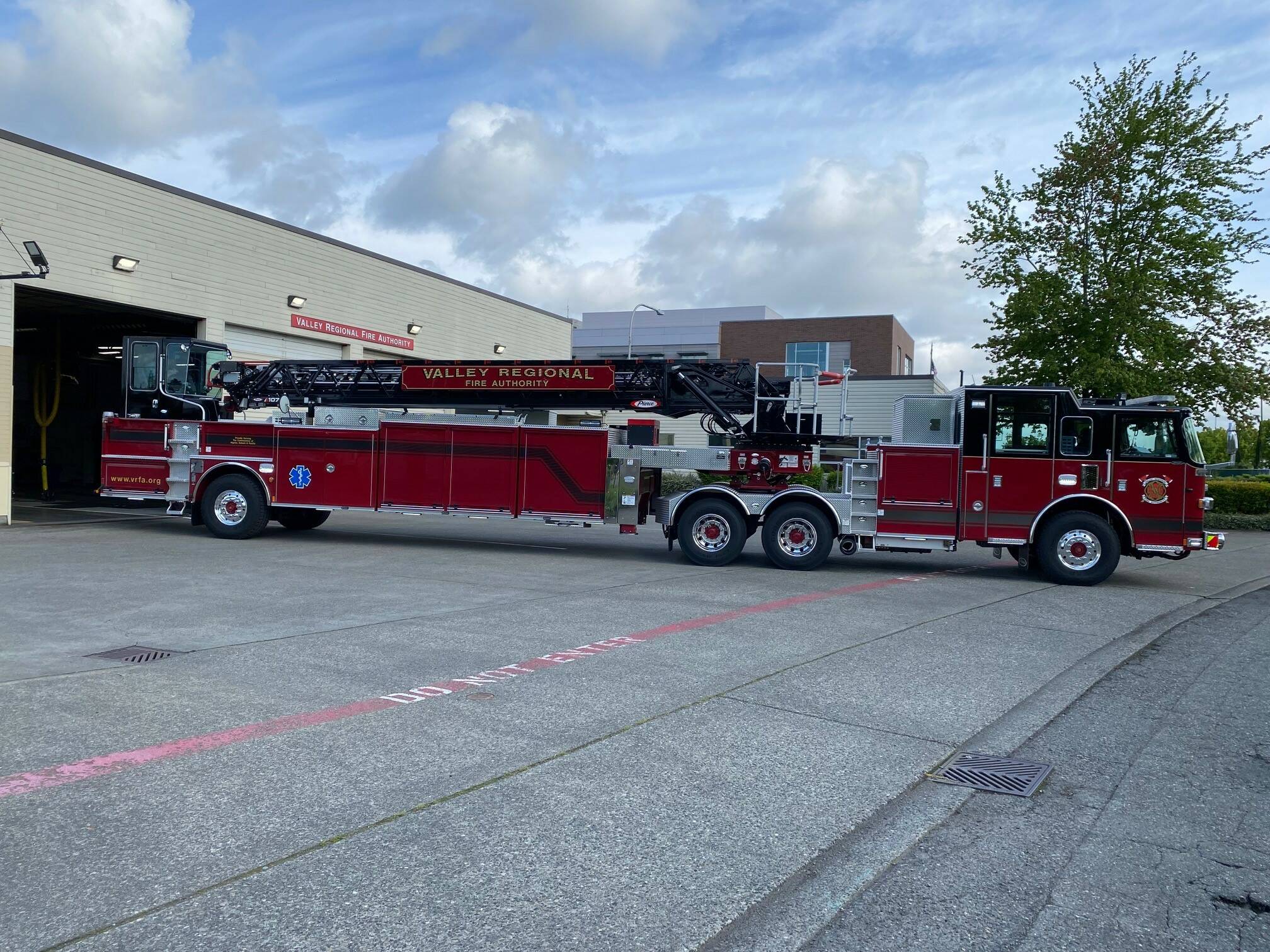By 2021, Ladder 331 was reaching the end of its service life, and the Valley Regional Fire Authority knew it would have to replace the truck soon.
But with what? Among the many possibilities out there, which one would best serve the community and give everyone the best deal for the dollar?
Took months of research to answer those questions, but the solution arrived in Auburn last May — a gleaming piece of equipment carrying the impressive name Ascendant 107’ Heavy-Duty Tiller Aerial Ladder made by Pierce Manufacturing.
Most people call it a Tractor Drawn Aerial.
The total cost of the new TDA — including sales tax — was $1.6 million.
To describe what people get for their bucks, it is crucial they first understand what a TDA is.
All Tractor Drawn Aerials include a tractor and a trailer with a second driver, who steers the rear wheels from the back of the trailer section, commonly referred to as “tilling.” The tiller driver sits high enough to act as a second set of eyes for the tractor driver when responding to calls. This advantageous position helps spot potential hazards further away, allowing for more reaction time and ultimately leading to safer responses.
All ladder trucks use outriggers to stabilize the vehicle when the aerial ladder is in use. Many styles of ladder trucks have four outriggers, but this TDA has only two, allowing it to set up the aerial faster and in more confined areas.
For these reasons, the TDA is known as the most maneuverable aerial apparatus in the fire service. Although they are longer than straight-frame aerials, they can navigate tighter roads and smaller clearances than straight-frames. The increased maneuverability is highly beneficial, considering the urban growth within local communities, including multifamily housing developments and mid and high-rise buildings.
When paired with the aerial ladder’s 107-foot reach, the TDA allows firefighters to place the truck in the most advantageous location to conduct a rescue, position the aerial master stream in the best position, and get to a roof more quickly to provide tactical information or to perform ventilation. The truck’s storage capacity will also allows firefighters to efficiently deliver various specialized tools to the emergency scene.
In addition to the 107-foot aerial ladder, the TDA will carry more than 200 feet of ground ladders of various sizes. Extra ladders increase safety for responders in the form of multiple means of egress during fires and allow for more escape routes for trapped occupants.
Although this particular TDA is not outfitted with a water pump, the VRFA can fight fires using a Compressed Air Foam System (CAFS). This system uses compressed air, the 60 gallons of water carried on the truck, and a concentrated foam solution to produce 1,200 gallons of firefighting foam. We can use this foam to tackle a variety of small fires, including car fires, dumpster fires, and brush fires. When large volumes of water are needed, the TDA can be connected to a fire engine to deliver over one thousand gallons per minute from the tip of its ladder.
What this all comes down to is sharpened response to perilous situations. with enhanced maneuverability, ladder reach and storage capacity and a quicker aerial deployment time.
Before the TDA goes into service, firefighters assigned to Ladder 331 will complete the following training:
Classroom sessions focused on driving safety
Eight (8) hours of drive time through a traffic cone course in both the driver and tiller positions using Washington State’s Emergency Vehicle Incident Prevention (EVIP) curriculum
Twenty (20) hours of drive time on Algona, Auburn, and Pacific streets
Dozens of drills to become proficient in deploying the 107’ aerial for roof access and elevated master stream deployment


